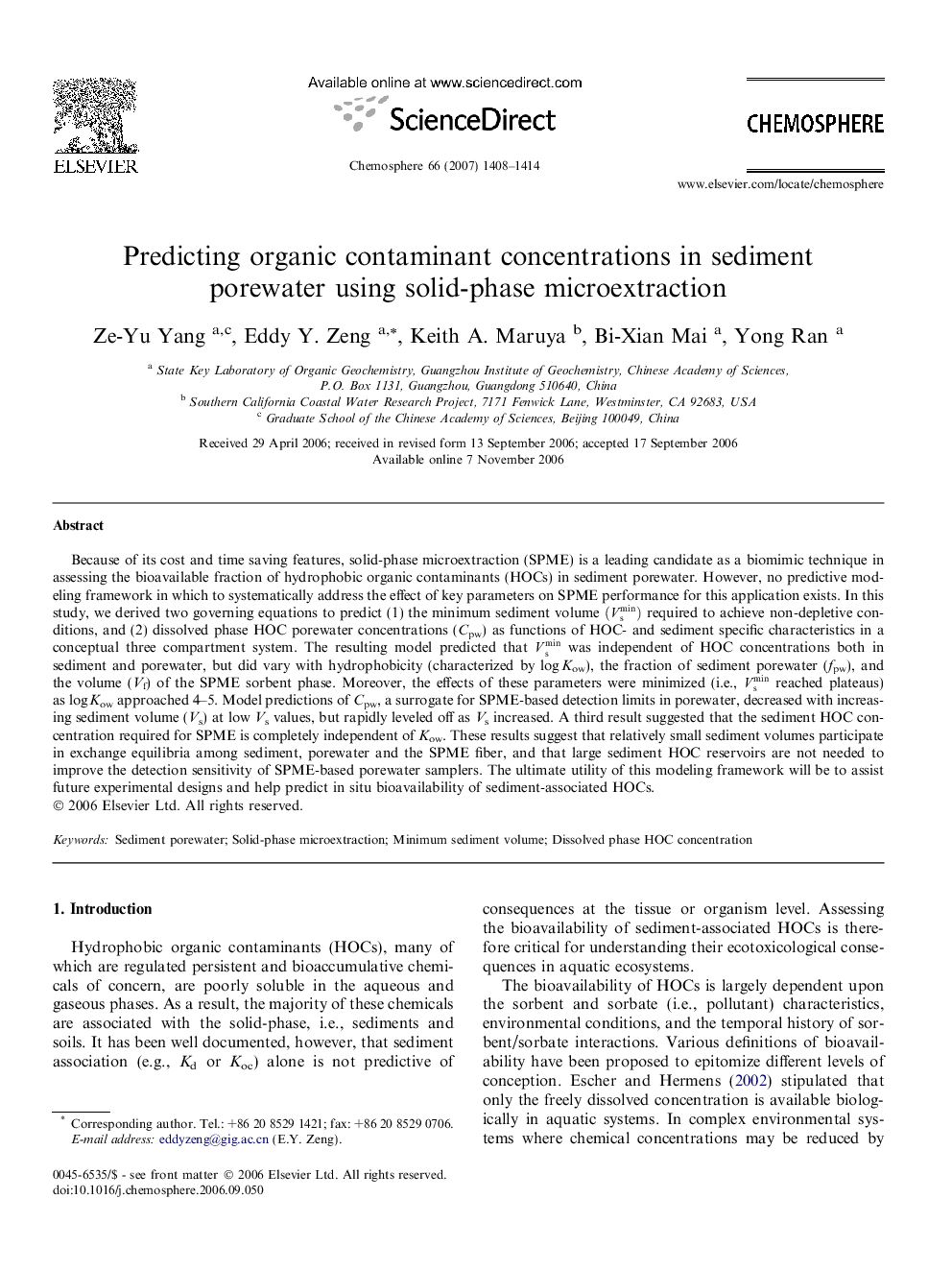| Article ID | Journal | Published Year | Pages | File Type |
|---|---|---|---|---|
| 4415178 | Chemosphere | 2007 | 7 Pages |
Because of its cost and time saving features, solid-phase microextraction (SPME) is a leading candidate as a biomimic technique in assessing the bioavailable fraction of hydrophobic organic contaminants (HOCs) in sediment porewater. However, no predictive modeling framework in which to systematically address the effect of key parameters on SPME performance for this application exists. In this study, we derived two governing equations to predict (1) the minimum sediment volume (Vsmin) required to achieve non-depletive conditions, and (2) dissolved phase HOC porewater concentrations (Cpw) as functions of HOC- and sediment specific characteristics in a conceptual three compartment system. The resulting model predicted that Vsmin was independent of HOC concentrations both in sediment and porewater, but did vary with hydrophobicity (characterized by log Kow), the fraction of sediment porewater (fpw), and the volume (Vf) of the SPME sorbent phase. Moreover, the effects of these parameters were minimized (i.e., Vsmin reached plateaus) as log Kow approached 4–5. Model predictions of Cpw, a surrogate for SPME-based detection limits in porewater, decreased with increasing sediment volume (Vs) at low Vs values, but rapidly leveled off as Vs increased. A third result suggested that the sediment HOC concentration required for SPME is completely independent of Kow. These results suggest that relatively small sediment volumes participate in exchange equilibria among sediment, porewater and the SPME fiber, and that large sediment HOC reservoirs are not needed to improve the detection sensitivity of SPME-based porewater samplers. The ultimate utility of this modeling framework will be to assist future experimental designs and help predict in situ bioavailability of sediment-associated HOCs.
